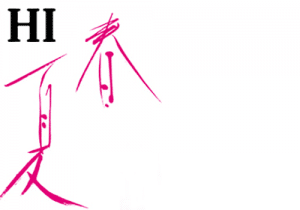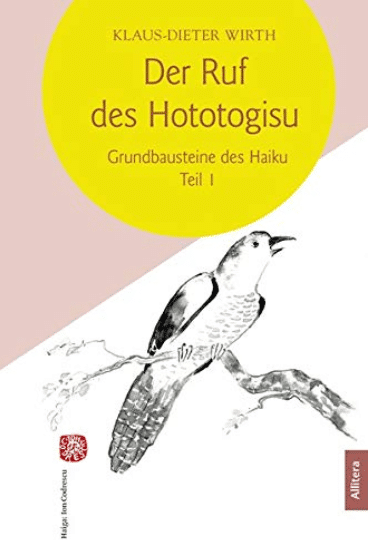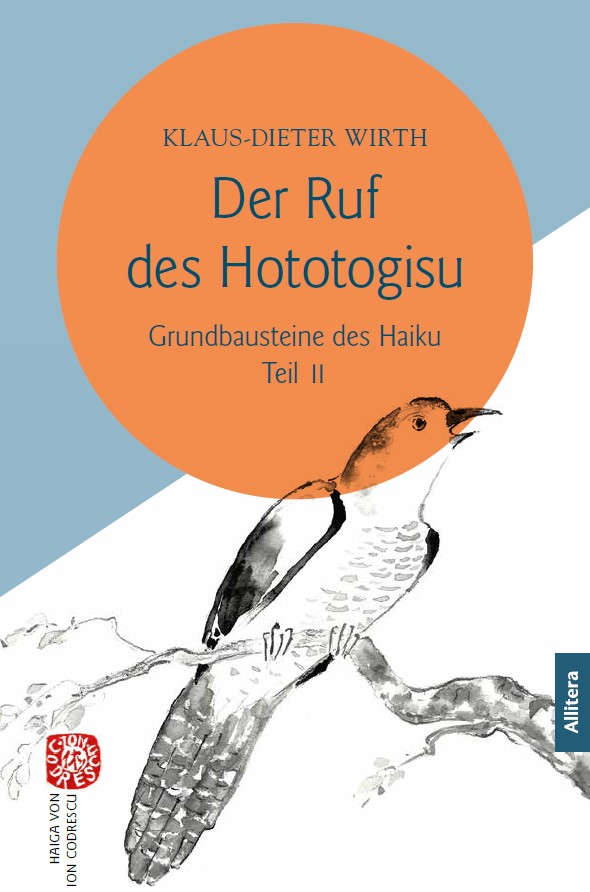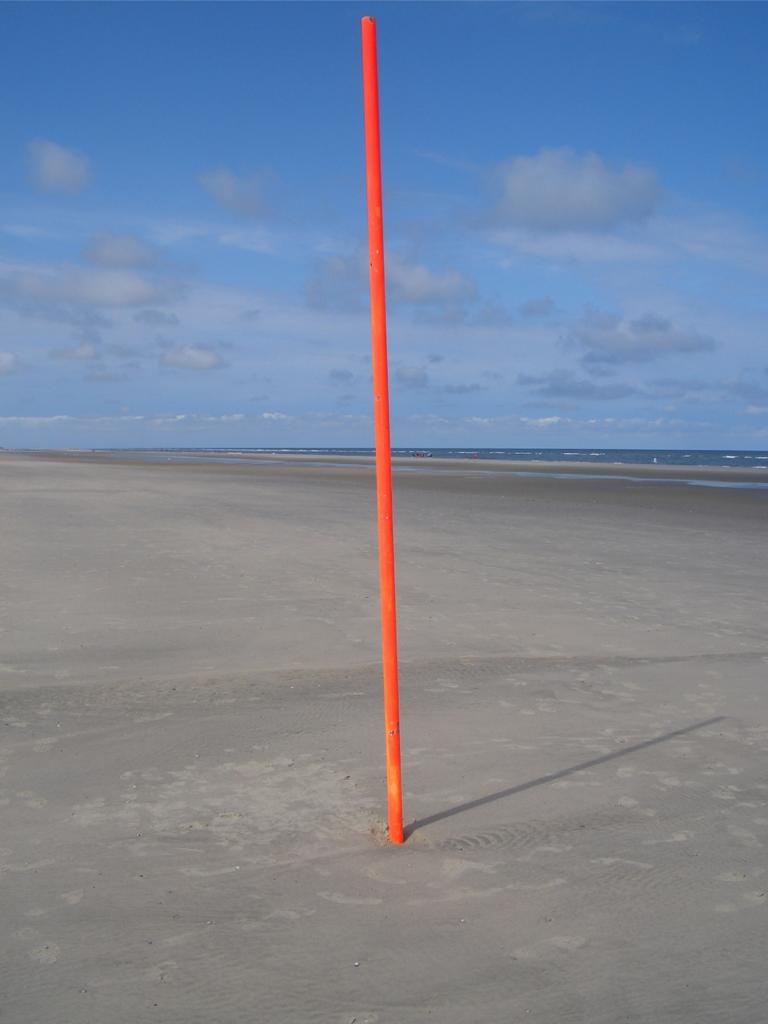Es wurden insgesamt 199 Haiku von 73 Autorinnen und Autoren und 30 Tanka von 18 Autorinnen und Autoren für diese Auswahl eingereicht. Einsendeschluss war der 15. Oktober 2017. Diese Texte wurden vor Beginn der Auswahl von mir anonymisiert.
Jedes Mitglied der DHG hat die Möglichkeit, eine Einsendung zu benennen, die bei Nichtberücksichtigung durch die jeweilige Jury auf einer eigenen Mitgliederseite veröffentlicht werden soll. Eingereicht werden können nur bisher unveröffentlichte Texte (gilt auch für Veröffentlichungen in Blogs, Foren, sozialen Medien und Werkstätten etc.). Bitte keine Simultan-Einsendungen!
Es gibt außerdem die Möglichkeit, die Haiku/Tanka selbst einzutragen:
DHG- Webseite/Aktivitäten/Haiku-Tankaauswahl/Onlineformular
oder bitte senden an:
auswahlen@deutschehaikugesellschaft.de
Der nächste Einsendeschluss für die Haiku/Tanka-Auswahl ist der
15.Januar 2018.
Jeder Teilnehmer und jede Teilnehmerin kann bis zu fünf Texte – davon drei Haiku – einreichen.
Mit der Einsendung gibt der Autor/die Autorin das Einverständnis für eine mögliche Veröffentlichung in der Agenda 2019 der DHG sowie auf http:/www.zugetextet.com/
An dieser Stelle möchte ich Petra Klingl für die jahrelange Koordinierung der Juryarbeit und für ihre freundliche, geduldige Hilfe danken, die nötig war, um diese schöne Aufgabe reibungslos von ihr übernehmen zu können.
Eleonore Nickolay
Haiku-Auswahl der HTA
Die Jury bestand aus Christa Beau, Gérard Krebs und Dagmar Westphal. Die Mitglieder der Auswahlgruppe reichten keine eigenen Texte ein. Alle ausgewählten Texte – 35 Haiku – werden in alphabetischer Reihenfolge der Autorennamen veröffentlicht. Es werden bis zu max. zwei Haiku pro Autor/-in aufgenommen. „Ein Haiku, das mich besonders anspricht“ – unter diesem Motto besteht für jedes Jurymitglied die Möglichkeit, bis zu drei Texte auszusuchen (noch anonymisiert), hier vorzustellen und zu kommentieren.
Da die Jury sich aus wechselnden Teilnehmern zusammensetzen soll, möchte ich an dieser Stelle ganz herzlich alle interessierten DHG-Mitglieder einladen, als Jurymitglied bei kommenden Auswahl-Runden mitzuwirken.
Ein Haiku, das mich besonders anspricht
Glühwürmchentanz
unsere Nachbarn
streiten wiederHildegard Dohrendorf
Es ist ein Sommerabend zwischen Juni und Juli. Die Glühwürmchen senden ihre Lichtsignale, um zur Paarung zueinander zu finden. Ihr Leben ist voller Glanz, Leidenschaft und romantischer Tragik, denn kurz nach der Paarung verglüht das Liebeslicht. Wieder beginnt das Licht eines Würmchens, eigentlich sind es Käfer, zu glühen, ein anderes geht gerade aus. Subjektiv gesehen erscheint es uns wie ein Tanz.
Dem gegenüber steht der Streit der Nachbarn. Es ist nicht ihr erster Streit. Nein, sie streiten wieder.
Vielleicht ein Ehepaar, die Liebe, die Leidenschaft zueinander erloschen. So wie das Licht eines Glühwürmchens.
Für mich eine gelungene Juxtaposition und ein gelungenes Haiku.
Ausgesucht und kommentiert von Christa Beau
wurzelpfad
mein gespräch
mit vaterHelga Stania
Mit neun Silben ein äußerst kurzes Haiku, und doch steckt so viel darin. Vater und Sohn (oder Tochter) sind in der Natur, im Wald, unterwegs. Dabei gehen sie auch einen Pfad voller Wurzeln entlang. Der Sohn bzw. die Tochter – vielleicht auch der Vater – wird sich beim vorsichtigen Gehen bewusst, wie viel diese Wurzeln, auf denen die Bäume ‚aufbauen‘, mit der Gesprächssituation zwischen Kind und Vater gemeinsam haben. Möglich ist auch, dass der Sohn bzw. die Tochter allein unterwegs ist und auf dem Wurzelpfad an das Gespräch mit dem Vater erinnert wird. Auch im Gespräch geht oder ging es um „Wurzeln“, diesmal des Kindes, um das, was das Kind vom Vater mitbekommen hat. Das kann positiv und/oder negativ sein. Sehr oft ist das mehr, als wir uns einzugestehen bereit sind.
Minimalistischer kann man das nicht mehr ausdrücken. Noch besser würde mir das Haiku allerdings gefallen, wenn wurzelpfad NICHT kursiv geschrieben wäre.
Ausgesucht und kommentiert von Gérard Krebs
Kranichrufe
auf dem Fensterbrett
rastet das LichtSimone K. Busch
Kraniche, Japans Boten des Glücks – zweimal im Jahr ziehen sie über mein Haus hinweg: im Herbst von Norden nach Süden und im Frühjahr von Süden nach Norden, gezogen vom Licht, dem sie folgen.
Ach, leider kann ich nicht mit ihnen ziehen, bin nur ein Mensch, schwach und flügellos unvermögend. Ich öffne einen Fensterflügel, stütze meine Arme aufs Fensterbrett und lausche ihren Rufen, die sich langsam entfernen.
Ihre lichten Rufe hallen noch eine Weile in mir nach. Und so bleibt das Licht als Teil von ihnen bei mir und rastet für kurze Zeit auf dem Fensterbrett – zweimal im Jahr. In der Hast meines Lebens halte ich inne, lasse es zu, dass mir die Kraniche Rast und einen Lichtblick bringen – welch ein Glück!
Ausgesucht und kommentiert von Dagmar Westphal
Die Auswahl
am ersten schultag
mit der tüte im arm
die elternSilvia Bacher
am Lagerfeuer
sie kommen aus dem Versteck
die alten LiederChristof Blumentrath
in meinen Stiefeln
alles was ich über
die Berge weißChristof Blumentrath
Schaufensterbummel
mein Spiegelbild
trägt ChanelStefanie Bucifal
Stammtischgelächter
ein Beben
in jedem BierglasStefanie Bucifal
Kranichrufe
auf dem Fensterbrett
rastet das LichtSimone K. Busch
Windfetzen
unsere Worte erkunden
den HerbstSimone K. Busch
Abgeerntete Felder.
Am blassen Himmel
rüttelt ein Falke.Reinhard Dellbrügge
Glühwürmchentanz
unsere Nachbarn
streiten wiederHildegard Dohrendorf
in der hofpause
kinderlachen und kreischen –
ein mauerblümchenBeate Fischer
Kinderrufe.
Der Schnee des Waldes
wird heller.Volker Friebel
Kykladenwind
Der Vollmond treibt langsam
an den StrandHans-Jürgen Göhrung
der erste Schrei
verweht die
letzten WorteGregor Graf
Unter der Kastanie
über Kindheitserinnerungen
stolpernWolfgang Gründer
Die Kerze
an deinem Geburtstag –
diesmal ein GrablichtErika Hannig
Neujahrsmorgen
wir streuen Salz
in alte WundenGabriele Hartmann
niemand liest mehr
im garten gegenüber
die äpfel aufKerstin Hirsch
am Ende des Sommers
über unreife Trauben
rinnt RegenAnke Holtz
Handyklingeln
ihr Blick
flattert davonAnke Holtz
Oktoberlicht
noch im Gespräch
Grille und BachAngelika Holweger
durch den Nebel
das Leuchten
am HagebuttenhangIlse Jacobson
Der Krabbenkutter
Mit seinen Netzen
fischt er Möwen vom HimmelDeborah Karl-Brandt
AG-Besprechung
ein Tropfen am Fenster
zögertSilvia Kempen
Kastanien
in meiner Hand
KindheitserinnerungenPetra Klingl
alter Teich …
worauf wartest du noch
fragt mich der FroschEva Limbach
Gletscherwanderung …
im blauen Eis verborgen
die verflossene ZeitRamona Linke
im Streb
das Gesicht des Hauers
wenn der Hobel anfährtRamona Linke
Flüsterboot
wir folgen dem Flug
der LibelleEleonore Nickolay
Herbstzeitlose
auf der Spielwiese von einst
reihen sich HäuserEleonore Nickolay
ich vermisse
die stimme meiner tochter
mit jeder mailRené Possél
fernweh
quer durch rumänien
mit dem fingerSonja Raab
ackersenfblüte
vom sturm verzerrt
die schreie der krähenBirgit Schaldach-Helmlechner
wurzelpfad
mein gespräch
mit vaterHelga Stania
mädchengesicht
ich lese die spuren
ihrer zukunftPeter Wißmann
nach dem familientreff
im zug
das rattern der gedankenPeter Wißmann
Tanka-Auswahl der HTA
In der Vergangenheit kam immer wieder die Anregung von HTA-Jurymitgliedern, die Tanka-Jury auszugliedern, da sich Jury-Mitglieder überfordert fühlten, bei den Tanka-Einsendungen eine fundierte Auswahl zu treffen. Der Vorstand beriet sich, da uns auch hier Kompetenz wichtig war, und auf Anfrage erklärten sich Tony Böhle und Silvia Kempen bereit, diesen Bereich der HTA-Auswahl dauerhaft zu übernehmen.
Mit dieser SOMMERGRAS-Ausgabe ist es nun soweit: Wir haben eine feste Tanka-Jury. Silvia Kempen und Tony Böhle stellen sich vorab kurz vor, und auch ein einleitender Aufsatz fehlt nicht!
Die Redaktion freut sich!
Alle ausgewählten Texte – 5 Tanka – werden in alphabetischer Reihenfolge der Autorennamen veröffentlicht.
„Ein Tanka, das mich besonders anspricht“ – unter diesem Motto werden Texte vorgestellt und kommentiert.
Tanka – was ist das?
Tony Böhle
Was ein Tanka eigentlich ist, diese Frage hat mich sehr lange beschäftigt und treibt mich auch heute noch um. Für gewöhnlich möchte man versucht sein zu sagen, ein Gedicht in fünf Zeilen zu 5‑7‑5‑7‑7 Silben – das haben wir alle am Anfang so gelernt. Das Tanka aber so zu sehen, aus einem rein formalen Blickwinkel, ist sicherlich die einfachste Definition, aber auch die oberflächlichste. Die Regel der 31 Silben gilt für das Tanka genau so viel oder eben so wenig wie die 17 Silben für das Haiku und ist auch im Land seiner Herkunft immer wieder für das eine oder andere künstlerische Ziel beiseitegelegt worden. Gleiches gilt auch für die Aufteilung in fünf Zeilen bzw. Segmente. Was das Wesen des Tanka ausmacht, seinen Geschmack, wie manche sagen, erschließt sich erst auf den zweiten Blick und nach vielen Stunden des Lesens. Die beste Antwort auf die Frage nach dem Wesen des Tanka wurde bereits von den alten japanischen Meistern gegeben und ist im Vorwort zum Kokin Wakashū, der wohl bekanntesten klassischen Tanka-Sammlung, eindrucksvoll auf den Punkt gebracht:
„Ohne große Kraftanwendung bewegt es Himmel und Erde, besänftigt die Gefühle unsichtbarer Geister und Götter, schafft Gleichklang zwischen Mann und Frau und bringt Ruhe in die Herzen zorniger Krieger.“ [1]
Auch wenn Geister, Götter und zornige Krieger nicht mehr so recht in unsere Zeit passen wollen, hat dieser Satz nichts von seiner Gültigkeit verloren. Jede Generation von Tanka-Autoren, besonders im 20. Jahrhundert, musste ihre eigene Antwort darauf finden, wie in nur fünf Zeilen Himmel und Erde ohne Kraftanstrengung zu bewegen sind. Beschäftigt man sich mit den großen Namen (Akiko Yosano, Ishikawa Takuboku, Saito Mokichi, Shuji Terayama, Tawara Machi) wird man erstaunt sein, wie verschieden und immer wieder faszinierend neu diese Antworten ausfallen können. Sie ergründen die eigenen tiefsten Abgründe, legen den Finger in die offenen Wunden der Gesellschaft, provozieren, rufen Widerstand hervor, betrachten das Kleine wie das Große, mystifizieren, beobachten kühl, überraschen, klagen, verleihen dem Ungehörten ihre Stimme und bleiben doch nie auf einem ausgetretenen Pfad, sondern suchen das Neue.
Auch ich habe mich beim Lesen schon einmal gefragt, ob nicht schon lange alles gesagt sei, oder was noch zum Schreiben übrig bleibe. Die Antwort lautet zum Glück: eine ganze Menge. Wer mit offenen Augen durch unsere moderne Welt geht, Technik, Werbung, Medien, Widersprüche, Absurditäten, Ungerechtigkeiten und Zwischenmenschliches beobachtet, wird Inspiration im Überfluss finden. Eine kleine Kostprobe gefällig?
Ich will die Delle
In meinem Strohhut einfach
Lassen wie sie ist,
So als sei auch sie eines
Meiner ReiseandenkenTawara Machi [2]
wie aus Angst
dass man hört
was ich denke
unwillkürlich
zurückweichend
vor dem StethoskopIshikawa Takuboku [3]
Riesenrad
dreh dich nur dreh dich
Das Erinnern währt
für dich einen Tag lang,
für mich ein Leben langKuriki Kyoko [4]
Entfesselt von mir selbst
bin ich nur
ein vorübergehender Gedanke
im Geist
des WaldesClaire Everett [5]
wie man Abstand hält
zu einem verletzten Tier,
wartet, ob es
einen heranlässt – nur dass
man fernbleibt, ich kein Tier binIngrid Kunschke [6]
So wundervoll einfach und lyrisch kann ein Tanka sein, Himmel und Erde ohne Anstrengung bewegen und uns gleich dazu! Was ein Tanka eigentlich ist, besonders ein gutes, diese Frage muss wohl jeder für sich selbst beantworten. Eines jedoch, ist es nie: langweilig.
[1]www.TankaNetz.de, Stand 19.11.2016
[2]Christine Mitomi, Das „Sarada Kinenbi“ der Dichterin Tawara Machi: Untersuchung zu dem Millionenerfolg einer Gedichtsammlung in Japan, 1990.
[3]Trauriges Spielzeug. Gedichte und Prosa. Frankfurt am Main 1991, Insel
[4]„Gäbe es keine Kirschblüten …“ Tanka aus 1300 Jahren., Philipp Reclam jun., Stuttgart 2009 [5]Einunddreißig, Ausgabe 14, August 2016
[6]www.TankaNetz.de, Stand 19.11.2016
Kurzvorstellung von Silvia Kempen
Tony Böhle
Silvia Kempen kannte ich schon eine ganze Weile durch ihre Beiträge aus Sommergras und Haiku-heute. Wirklich kennengelernt habe ich sie aber erst etwas später. Es war bei Ralf Brökers Haiku NRW-Treffen in Ochtrup am 5. Juli 2014, und Costa Rica verlor gerade im WM-Viertelfinale gegen die Niederlande. Geboren 1958, engagiert sich Silvia seit 2005 für das Haiku, ist seit 2007 Mitglied der DHG, 2009 bis 2013 Mitglied des erweiterten Vorstands der DHG und Mitarbeiterin der SG-Redaktion, danach kurzzeitige Koordinatorin der HTA und seit November 2013 Betreiberin des Blogs Tageshaiku https://tageshaiku.blogspot.de/. Da scheint es schon fast verwunderlich, dass neben dieser Fülle von Aufgaben noch Zeit für das Schreiben von Haiku, Haibun und das Gestalten von Foto-Haiga geblieben ist. Und Tanka? Ja, auch die sind nicht zu kurz gekommen! Bei einem Haiku-Treffen in Bad Nauheim war es die Vorstellung des Buchs „Gäbe es keine Kirschblüten …“, die Silvias Interesse für diese Form weckte. In den Jahren 2009 und 2010 hatte sie dann in einer Tanka-Gruppe unter der Anleitung von Ingrid Kunschke mitgewirkt und dann 2015 bis 2016 in einer Tanka-Gruppe unter meiner Leitung. Jenseits all dieser Daten und Fakten ist es wohl am besten, Silvia durch eines ihrer Tanka vorzustellen:
den Blick rechts und links
zum Himmel und zum Boden
Übungen
das Gleichgewicht der Welt
wieder neu zu justieren
Kurzvorstellung von Tony Böhle
Silvia Kempen
Von Tony Böhle und dem Tanka-Magazin Einunddreißig habe ich zum ersten Mal im Juli 2013 gehört, und zwar auf der Facebook-Seite haiku-like von Ralf Bröker. Persönlich kennengelernt habe ich ihn ein Jahr später in Ochtrup beim NRW-Haikutreffen von Ralf Bröker.
Die erste Ausgabe von Einunddreißig hat Tony als Gründer im Mai 2013 herausgegeben. Seit dem Frühjahr 2017 unterstützt ihn Valeria Barouch. Tony hat sein Interesse für japanische Versformen recht früh entdeckt und 2012 sein erstes Haiku geschrieben. Im selben Jahr ist er in die DHG eingetreten. Das erste Haiku bezeichnet er als vollkommen misslungen. Mittlerweile ist er 34 Jahre alt, und Haiku schreibt er nur noch äußerst selten. Seine eigentliche Heimat hat er im Tanka gefunden. Aber warum eigentlich? Dazu äußert er sich folgendermaßen:
„Obwohl ich kaum noch Haiku schreibe, schätze ich seine kompakte Form und den verdichteten Inhalt durchaus. Gleichzeitig hat mich die Form immer wieder an Grenzen geführt, die ich gern abschütteln wollte: weniger komprimiert schreiben und mich selbst weniger zurücknehmend. Als ich dann den ersten Band mit modernen Tanka in die Finger bekam – es war Trauriges Spielzeug von Ishikawa Takuboku –, wusste ich, dass es genau das war, wonach ich suchte. Ich glaube, man sollte sich unbedingt einmal in beiden Formen versuchen, ihre Stärken und Schwächen erkunden und dann entscheiden, was dem eigenen Stil am besten entspricht.“
Zum Schluss möchte ich noch ein von Tony geschriebenes Tanka vorstellen:
in dieser Welt
sind sie mir etwas wie
ein Schwert und Schild:
mein strahlend weißes Lächeln
und das knitterfreie Hemd
Ein Tanka, das mich besonders anspricht
nach dem Regen
die spiegelnden Gesichter
des Weges –
manchmal Lachen
unter buntem LaubAngelica Seithe
Vor dem Regen sehe ich bei einem Spaziergang, während ich nach unten schaue, nur den Weg an sich, aber „nach dem Regen“ ist da durch die Pfützen viel mehr zu entdecken, es ist wie eine zweite Welt, die in die Tiefe führt. Und in ihr spiegeln sich die Gesichter der oberen Welt. „Gesicht“ sehe ich in diesem Kontext als Metapher für die Seelen der Bäume, Gräser oder was so alles am Wegrand zu finden ist.
Ein Weg vorwärts oder auch zurück, das könnte unterschwellig bedeuten, dass hier auch der zurückliegende Lebensweg gemeint ist, an dem sich Gesichter aus der Erinnerung aufreihen und die jeweilige Zeit mit ihren Gefühlen sich in den Gesichtern spiegeln.
Im chinesischen Buddhismus ist der Spiegel eines der acht kostbaren Dinge, bedeutet die Seele im Zustand der Reinheit; der erleuchtete Verstand; aber auch Aufrichtigkeit. Bei einer Seele im Zustand der Reinheit liegt der Gedanke an die Unschuld von Kindern nahe. Und dahin führt mich der zweite Teil des Tanka.
„manchmal Lachen / unter buntem Laub“ – Wer kennt das nicht aus seiner Kindheit, sich im Laub einzubuddeln, so dass nur noch die Blätter zu sehen sind. Das ist ein riesiger Spaß und dazu gehört das Lachen, jedenfalls wenn man sich nicht mehr beherrschen kann.
Machen Kinder so etwas, wenn das Laub feucht oder sogar nass ist? Ich denke „ja“. Kürzlich erzählte mir eine Mutter, dass ihre Tochter (im Kindergartenalter) sogar durch Pfützen robben würde.
Ausgesucht und kommentiert von Silvia Kempen
Die Auswahl
Kneipenschlägerei!
jetzt werde ich
sie brauchen
meine 2%
Neandertaler DNAFrank Dietrich
Löwenzahnwiese.
Am Horizont
die Linien
naher Berge.
Wie schön ist die Welt
ohne Liebe.Volker Friebel
er lässt sich Zeit
mit seiner Antwort
dreht sich eine
und leckt dann an dem Wort
vielleichtGabriele Hartmann
Herbst –
An den Kais
im Museumshafen
pfeift der Wind
durch die nackten TakelagenAnnelie Kelch
nach dem Regen
die spiegelnden Gesichter
des Weges –
manchmal Lachen
unter buntem LaubAngelica Seithe







